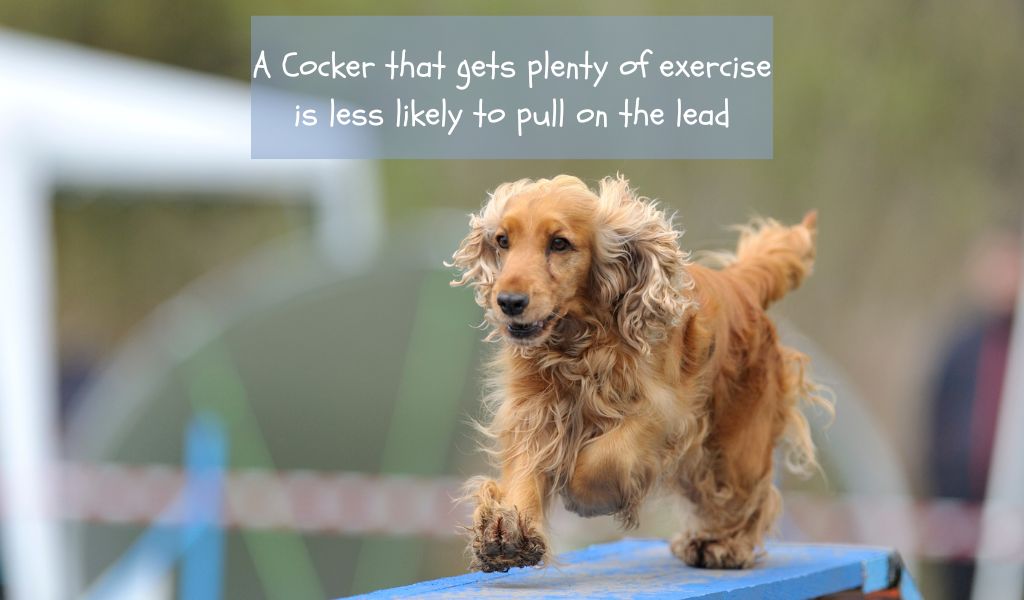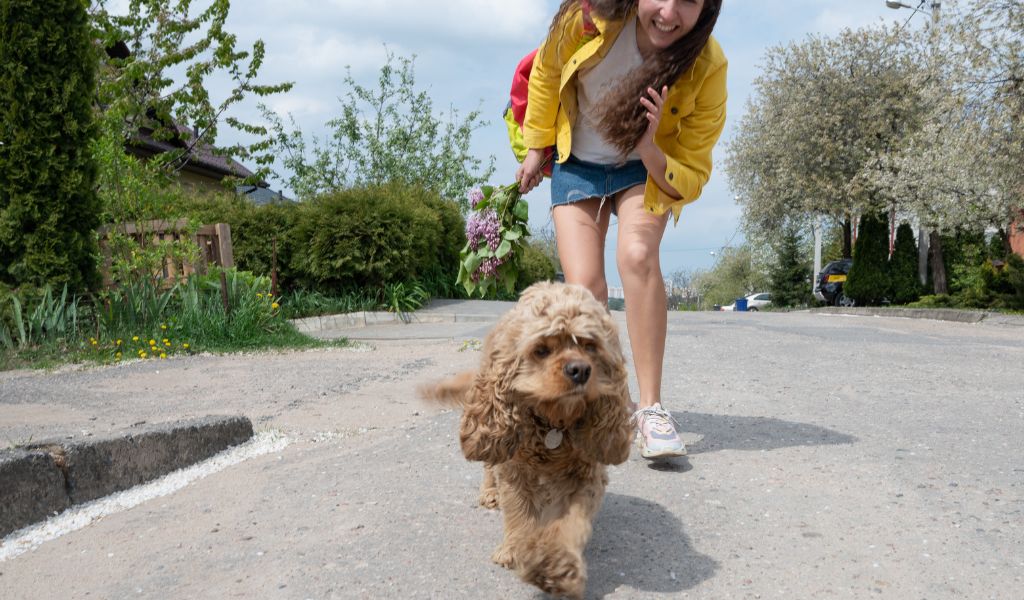Walking your Cocker spaniel is a great way to bond with your dog and get some exercise.
However, if your dog is constantly pulling on the lead, it can be frustrating and even dangerous.
In this comprehensive guide, we’ll explore some common reasons why Cocker spaniels pull on the lead, how to choose the right equipment for lead training, and effective techniques for teaching your dog to walk calmly by your side.
To stop a Cocker spaniel from pulling on the lead, it’s important to understand why they are pulling, choose the right lead and collar or harness, and use effective training techniques. Common reasons why a Cocker spaniel may be pulling include excitement, distractions, fear, and lack of exercise.
Understanding Why Your Cocker Spaniel is Pulling on the Lead
Before you can start training your Cocker spaniel to walk calmly on the lead, it’s important to understand why they are pulling in the first place.
Here are some common reasons:
Excitement: Cocker spaniels are active dogs and can get easily excited by the sights, sounds, and smells of the outdoors.
Distractions: Your dog might be distracted by other dogs, people, or wildlife while on a walk, causing them to pull towards the source of the distraction.
Fear: If your dog is afraid of something on the walk, they may try to pull away from it.
Lack of Exercise: A Cocker spaniel who hasn’t had enough exercise or playtime might have excess energy that they need to burn off during walks.

Getting the Right Lead and Collar
Choosing the right equipment for lead training is important.
Here are some factors to consider:
Lead Type: There are various types of leads to choose from, including standard, retractable, and training leads.
It’s important to choose a leash that’s comfortable for both you and your dog.
Collar Type: There are also various types of collars available, including buckle, martingale, and slip collars.
My personal preference is to avoid using a collar and simply use a rope type slip lead, however, if you must have a collar then make sure that it is a comfortable fit for your spaniel.
Harnesses: Some dog owners prefer to use harnesses instead of collars, as they distribute pressure more evenly across the dog’s body and can help to reduce pulling.
Training Your Cocker Spaniel to Walk on the Lead
Lead training takes time, patience, and consistency.
Here are some tips for training your Cocker spaniel to walk calmly on the lead:
Start in a quiet, safe environment: Begin your training in a quiet garden or park with few distractions.
Once your dog has mastered walking calmly in a low-stress environment, you can gradually move to more challenging areas.
Use positive reinforcement: Reward your dog with treats, praise, or a favourite toy when they walk calmly on the lead.
This encourages good behaviour and helps your dog understand what you want them to do.
Stop walking if your dog pulls: When your dog pulls on the lead, stop walking and wait for them to calm down before continuing.
This helps your dog learn that pulling doesn’t get them where they want to go.
Use a command word: Choose a command word like “heel” or “walk” and use it consistently during your training.
This helps your dog understand what you want them to do.
Practising Good Lead Etiquette
In addition to effective training techniques, practising good lead etiquette is important for successful leash training.
Here are some tips:
Walk at a steady pace: Keep a steady pace when walking your dog to help them stay calm and focused.
Use verbal cues and commands: Use your command word and other verbal cues to help guide your dog during walks.
Reward good behaviour: Praise and reward your dog when they walk calmly on the lead.
Common Mistakes to Avoid
Here are some common mistakes that can hinder your training efforts:
Pulling back on the lead: Pulling back on the lead can create a tug-of-war effect and encourage your dog to pull even harder.
Yelling or punishing your dog: Yelling or punishing your dog for pulling on the lead can damage your bond and trust with your dog.
Inconsistency in training: Inconsistent training can confuse your dog and make it harder for them to learn.
Frequently Asked Questions
Q: How long will it take to train my Cocker spaniel to walk calmly on the lead?
A: The amount of time it takes to train your dog depends on various factors, including your dog’s age, personality, and previous training experience.
With consistent training and patience, most dogs can learn to walk calmly on the lead within a few weeks.
Q: Can I use treats to train my dog to walk on the lead?
A: Yes, treats can be an effective tool for positive reinforcement during leash training.
Use healthy, low-calorie treats to reward good behaviour.
Q: Should I use a no-pull harness?
A: No-pull harnesses can be an effective tool for leash training, especially for dogs who have a strong pulling habit.
Choose a harness that fits your dog well and is comfortable for them to wear.
Conclusion and final thoughts..
Training your Cocker spaniel to walk calmly on the lead takes time, patience, and consistency.
By understanding why your dog is pulling on the lead and using effective training techniques, you can train your pet to walk calmly and confidently by your side.
Choose the right lead and collar, start training in a safe and quiet environment, and use positive reinforcement to encourage good behaviour.
Avoid common mistakes like pulling back on the lead or punishing your dog.
With dedication and persistence, you can enjoy peaceful walks with your Cocker spaniel.




